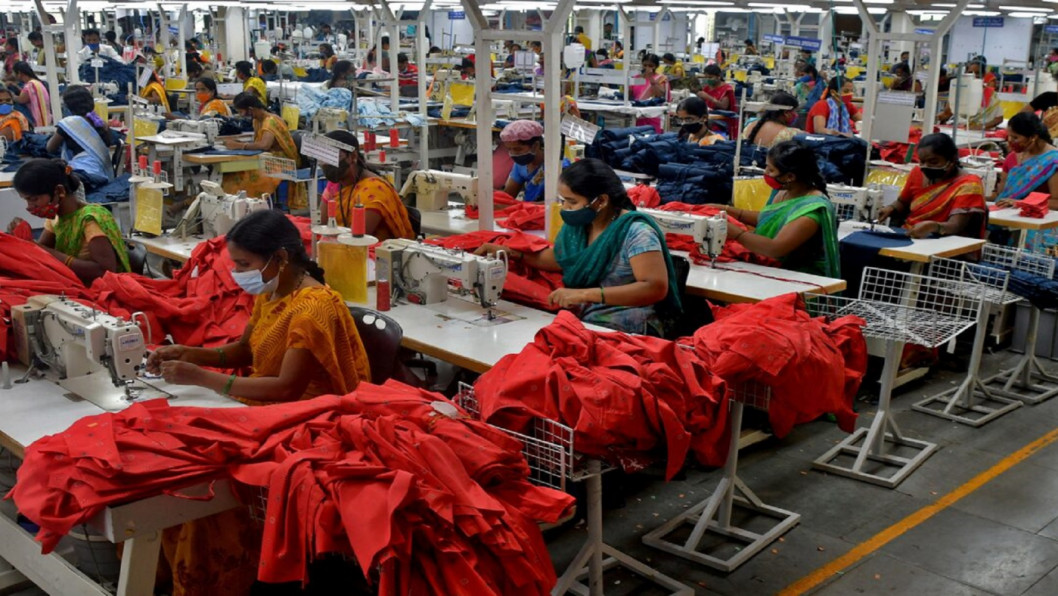
A recent World Bank (WB) report highlights a concerning trend for India's manufacturing sector. Vietnam and Bangladesh have surpassed India as the preferred low-cost manufacturing and export hubs. This shift signals a potential challenge for India's ambitions to become a global manufacturing powerhouse.
Key findings from the report
• Declining trade share: Despite its rapid economic growth, India's share in global trade has not kept pace. The proportion of trade in goods and services as a percentage of India's GDP has decreased in the past decade.
• Loss of market share: In particular, India's share in global exports of apparel, leather, textiles, and footwear (ALTF) declined from a peak of 4.5 per cent in 2013 to 3.5 per cent in 2022.
• Rise of Vietnam and Bangladesh: In contrast, Vietnam and Bangladesh have seen strong growth, reaching 5.9 per cent and 5.1 per cent of global ALTF exports, respectively, in 2022.
The report attributes this change to several factors. And one major cause is rising labor costs in India. While India still boasts a large and relatively inexpensive labor force, wages have been rising steadily in recent years. This has eroded some of India's cost advantages compared to its neighbors. Stronger infrastructure in competing countries is another reason. Vietnam and Bangladesh have invested heavily in infrastructure development, including ports, roads, and power supply. This has improved their efficiency and attractiveness to foreign investors.
Then there are favorable trade agreements as both Vietnam and Bangladesh have actively pursued free trade agreements with major economies, expanding their market access and making them more competitive export destinations. What’s more, Vietnam and Bangladesh have focused on developing specific manufacturing sectors, such as textiles and electronics, achieving economies of scale and expertise.
For example, Bangladesh's success in the textile industry is a prime example of how a focus on a specific sector, coupled with low labor costs, can drive export growth. The country has become the world's second-largest exporter of ready-made garments. On similar lines, Vietnam has attracted significant investment from global electronics companies, including Samsung and Intel. Their skilled workforce, improving infrastructure, and favorable trade agreements have made it a preferred destination for electronics manufacturing.
Table: Comparative manufacturing costs
|
Country |
Average monthly manufacturing wage ($) |
|
Vietnam |
250 |
|
Bangladesh |
150 |
|
India |
300 |
|
China |
750 |
The shift in low-cost manufacturing to Vietnam and Bangladesh underscores the importance of competitiveness in the global marketplace. Manufacturers are constantly seeking locations that offer the optimal combination of cost, quality, and efficiency. As wages rise in India and China, manufacturers are looking for alternative destinations that can provide similar capabilities at a lower cost.
Implications for India
The report underscores India needs to address several challenges to remain competitive in the global manufacturing landscape. These include improving labor productivity which entails enhancing labor skills as productivity is crucial to offsetting the impact of rising wages. Meanwhile lowering trade barriers and improving trade facilitation can make India a more attractive destination for foreign investment. Continued investment in infrastructure development is essential to improve logistics and connectivity. And simplifying regulations and creating a more business-friendly environment can encourage manufacturing growth. Identifying and promoting specific manufacturing sectors with high growth potential is also important for future growth.
India's success in manufacturing will be crucial for its economic growth and job creation. By addressing these challenges and learning from the experiences of Vietnam and Bangladesh, India can position itself for a more prosperous future in the global manufacturing landscape.












